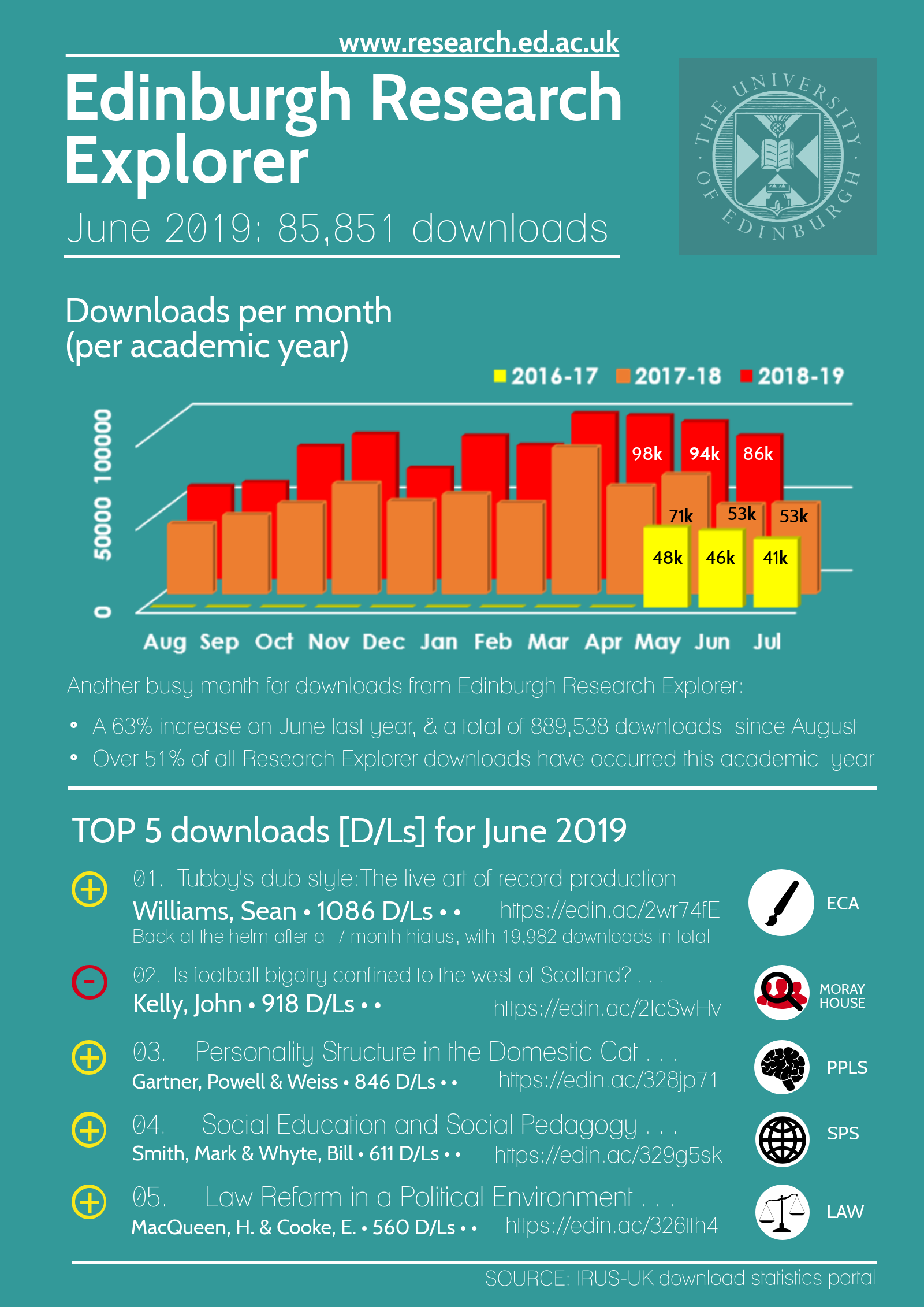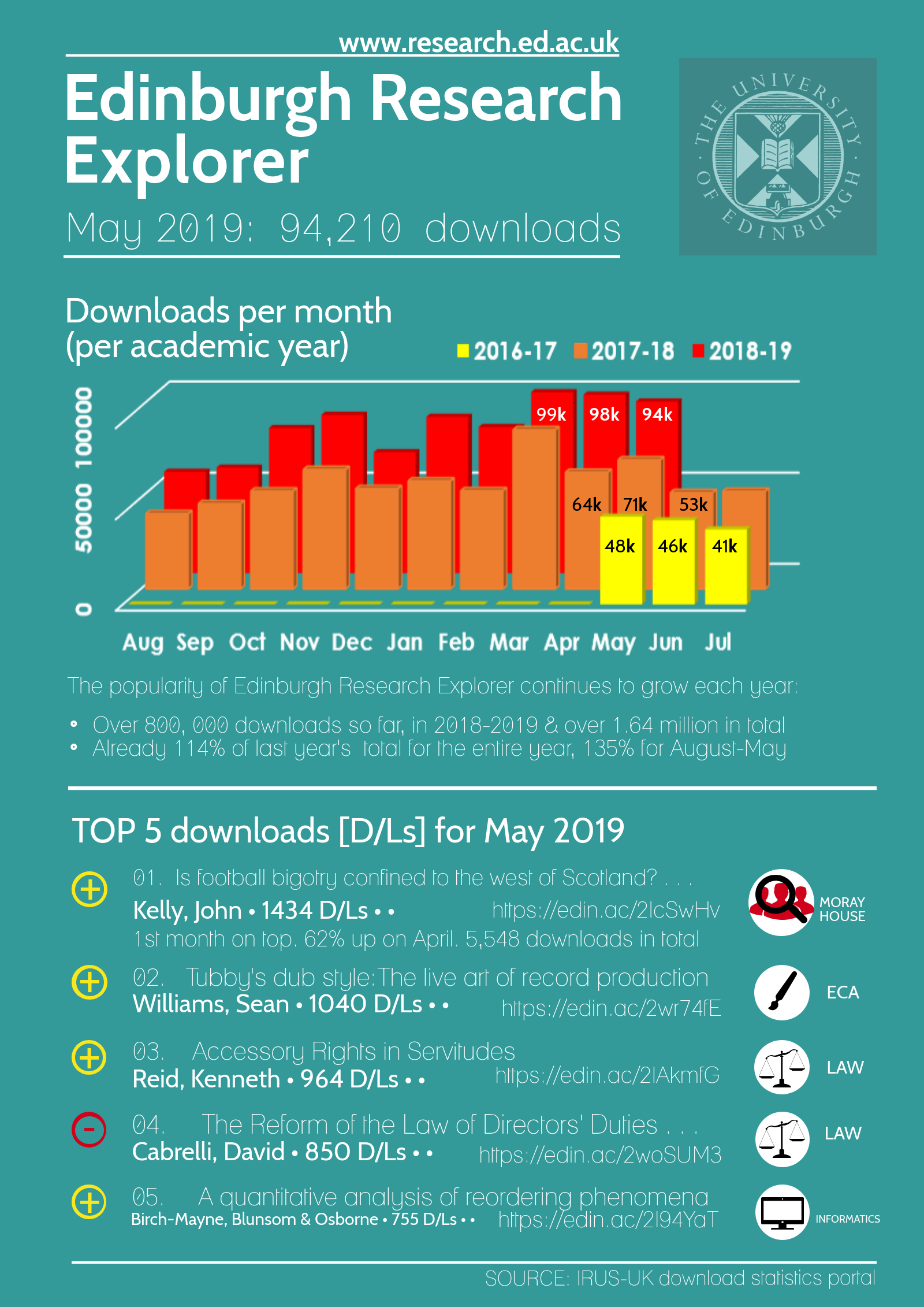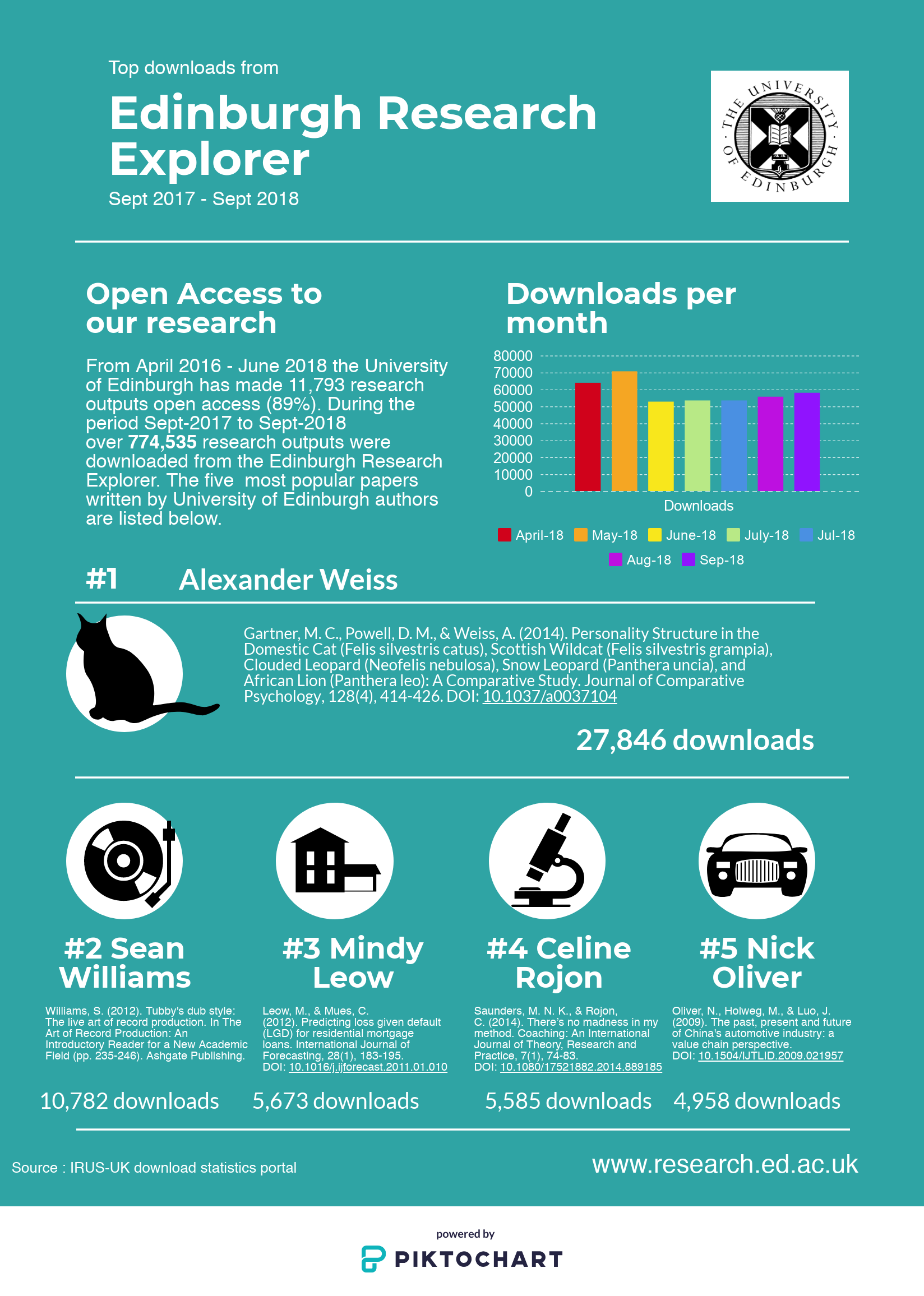The University of Edinburgh is a strong supporter of open access (OA), and in 2018, researchers at Edinburgh published over 7,000 peer reviewed research outputs, of which over 5,181 (74%) are openly available from the University’s research portal (www.research.ed.ac.uk). As a large and diverse organisation there is naturally a large variation in the way in which we make our research openly available. From our total of 5,181 open access research outputs we find that 2,959 outputs (or 57%) are published as Gold OA – where the publisher makes the version-of-record open sometimes for a fee – and 2,222 (or 43%) are available as Green OA – where the author makes their accepted manuscript open from our Institutional or Subject Repositories for free.
Over the last 5 years the University has spent in the region of £5 million with publishers to make around 2,800 papers Gold OA. The majority of these papers were published as ‘hybrid OA’ in subscription journals where the publisher charges subscription fees to access the closed content, and also charges an open access fee to make individual papers open access. This practice of charging twice is called ‘double-dipping’ as large research intensive institutions have not seen their subscription costs lowered in proportion to their open access expenditure.
Over the last 5 years we have seen a period of significant consolidation of the open access publishing market with just three companies responsible for publishing 51% of Edinburgh’s journal articles, whilst receiving 57% of the money available for open access. The bulk of the University of Edinburgh’s RCUK block grants have been spent on ‘Hybrid OA’ journals as shown in the diagram below. Only 3 out of the 10 most popular publishers are purely Gold OA and don’t charge subscriptions :

Block chart showing the top 10 publishers who received funds from the RCUK open access block grant during 2013-2018. The number in the top left of each box is the total number of Gold OA papers published, the number in the middle of the box is the total expenditure and the name of the publisher is in the bottom left of the box.
Research funders like UKRI and the Wellcome Trust previously supported this ‘hybrid-OA’ model, but they no longer believe that it supports a transition to full OA which is their aim. To precipitate a change in the publisher’s behaviour and to increase the adoption of open access, a number of important European research funders, co-ordinated by Science Europe, developed Plan S.
Plan S update
Plan S requires that, from 2020, scientific publications that result from research funded by public money must be published in compliant Open Access journals, and specifically states that ‘hybrid OA’ journals won’t be supported. As it currently stands, Plan S will be hugely disruptive as researchers will potentially not be able to publish in their journal of choice.
In order to understand the impact of how Plan S will affect our research staff, departments and the broader academic community, Library & University Collections carried out a wide ranging consultation exercise. The Scholarly Communications Team held a series of eight open meetings, during the period 23rd – 30th January 2019, which were attended by over 260 staff. As far as we are aware this was the largest consultation held by a HE institution.
Based on feedback gathered at these meetings, the University has submitted a balance response to that is supportive of Plan S and the time frames set down, but also reflects the concerns raised about risks to international collaboration – specifically co-publishing work with collaborators in non-Plan S regions of the world. The response, and more general information about Plan S, can be read in full on our web pages:
https://www.ed.ac.uk/information-services/research-support/publish-research/open-access/plan-s
UKRI will decide how to apply the principles of Plan S once it has concluded an ongoing review of its own open-access policies, which is not likely to be completed until next autumn. The current Open Access policy is firmly in place until 31st March 2020 and it would be improbable for UKRI to change terms and conditions of grant awards midway through the year. We can therefore expect UKRI to adopt Plan S from 1 April 2020.







